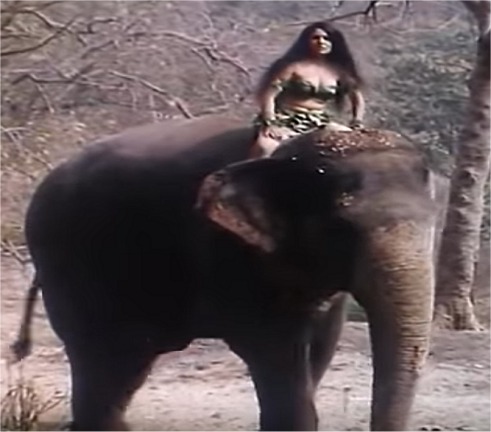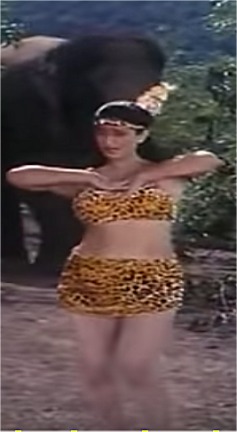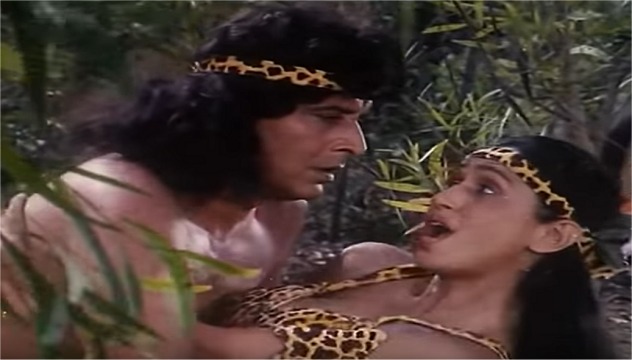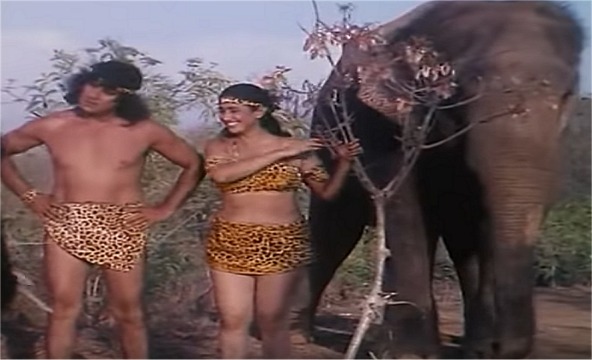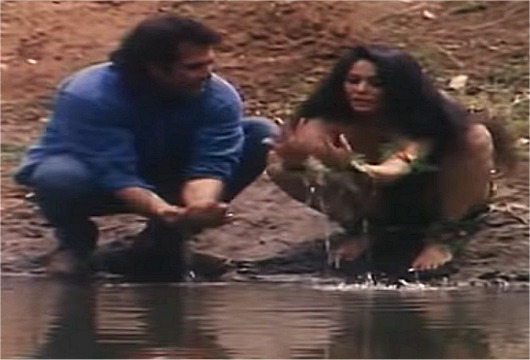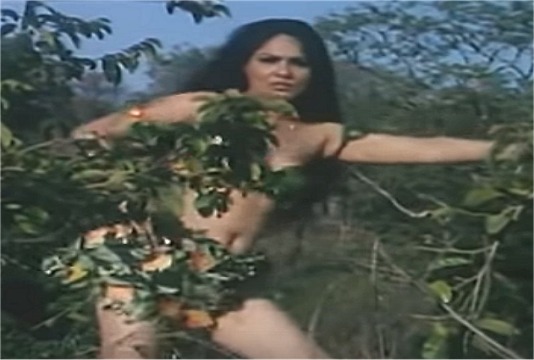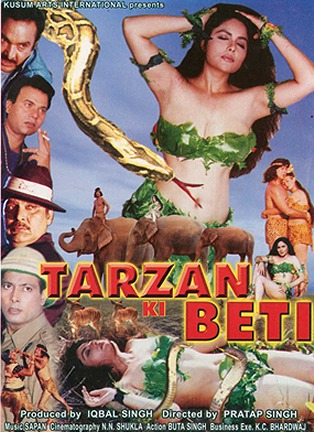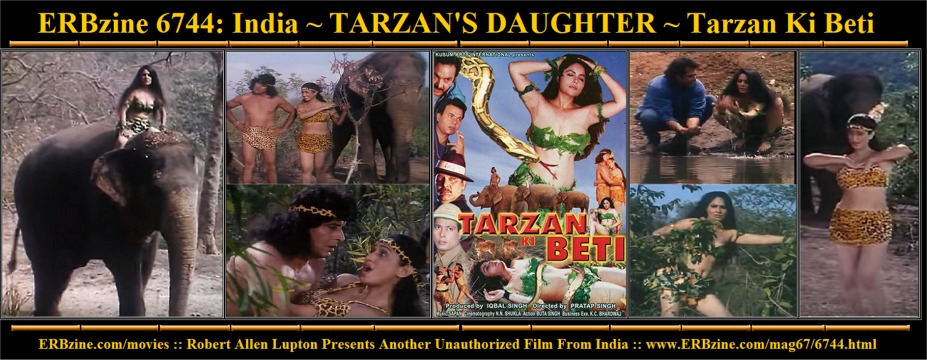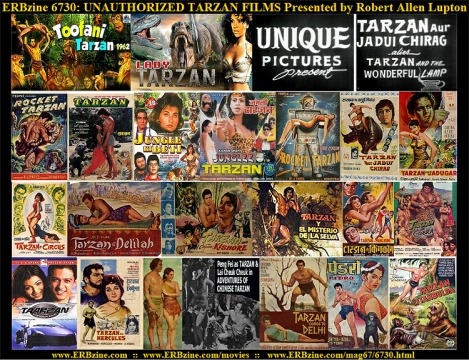There were two films titled Tarzan Ki Beti.
The first was released in 1938 and the second in 2002 as a sequel of the
Adventures
of Tarzan, a 1985 Bollywood film. Articles about the 2002
and the 1985 films will appear later in this series.
The second Tarzan Ki Beti, is a 1938 Aurora
Film Corporation and Kamla Movietone Productions movie directed
by Roop K. Shorey featuring Shyama Zutshi, Manika, Baig,
G. N. Butt, Matto, Zahoor Shah, M. L. Mattu, J. N. Dar, Hukum Singh, Nafiz,
Begum, Manek Kapoor, and Majnu (Harold Lewis). Anapam Ghatak
wrote
the music.
The two films are frequently confused. The poster included
above is from the 2002 film, but it is regularly shown incorrectly in incomplete
articles about the 1938 film. A cursory inspection of the credits on the
poster indicate that it is from the 2002 film.
The 1938 movie debuted at the Nishat Cinema Theatre
in Lashore on May 20, 1938. This article is about the 1938 film.
Tarzan Ki Beti translates
as “Tarzan’s Daughter,” or “The Daughter of Tarzan.”
Almost no information is available about this film. It
doesn’t appear that any prints, posters, or lobby cards from this budget
movie have survived. Without empirical evidence, at first I wasn’t sure
that the film was real. However, it is listed in several places. Cinestaan.com
lists the movie along with the cast and crew, but doesn’t have any pictures.
Indiancine.ma
lists the movie and includes a bio of the director, Roop Shorey.
Mpaop.org
has an article that includes the release date and theatre. Gomolo.com has
a page dedicated to the movie, but it is almost entirely devoid of specific
information. Osianama.com and funvils.com
both have pages about this movie, but no details. Muvyz.com
lists the songs from the film.
The film is listed in the amazing well researched book,
Global
Perspectives on Tarzan: From King of the Jungle to International Icon
edited by Annette Wannamaker and Michelle Ann Abate. Evidence
is overwhelming that the film, Tarzan Ki Beti was made in 1938,
but I have not been able to locate a surviving photograph, film clip, poster,
or movie still.
Roop K. Shorey, a Hindi and Punjabi director and
producer was born in Quetta (now Pakistan). Son of Roshan Lal
Shorey, Roop was born with a silver spoon in his mouth and raised by
an English governess. He acquired an early interest in Western music and
English literature. He started his career as a Cinematographer, lab assistant,
editor and producer in Kamala Movietone, owned by his father. (It’s
always all in the family in Bollywood.) As a child, he was a prolific writer
and composer, and followed in the footsteps of his father and made his
first full-length comedy Lucky Lovers at the age of 17. He
produced and directed more than fifty short films in Lahore, and turned
feature director with the coming of sound, pioneering low cost versions
of Bombay films: e.g. myths, love stories and Tarzan movies. Shorey was
the first to demonstrate the financial viability of this formula, esp.
in partnership with Dalsukh M. Pancholi.
One of the earliest films directed by Roop was
Majnu (1935) — a musical comedy satirizing the old story of Laila Majnu,
produced, directed and shot in Lahore with Ghulam Haider as music
director. Playing the lead was Roop’s childhood friend Harold Lewis,
akaMajnu.
With daring motorbike stunts and special effects, audiences were thrilled
at the sight of Majnu trapped on the railway tracks by the villain.
The film confirmed his success as a film-maker.
Tarzan ki Beti (1938) was hailed as the
best jungle picture ever produced in India at that time. Filmed in the
snowy Himalayas, the film topped its predecessor in its action sequences
and placed Punjab on the entertainment map of India and the world.
Majnu made a marked return in Nishani
(1942), a musical situational comedy with Majnu in a double role. With
music scored by Pandit Amernath, and Ragini as the heroine,
Roop
and his father personally trained the technical staff and musicians, who
worked morning to night on a fixed salary.
He worked with Information Films of India in WW2
and migrated to Bombay following partition and established Shorey Films
in
Bombay (1948). With a solid reputation in Hindi and Punjabi cinema already
established, Roop began to set new trends in comedy film with Ek
Thi Ladki (1949, starring Motilal, Meena Shorey, Kuldeep Kaur,
Majnu and I.S. Johar), one of Roop’s biggest hits as
a producer. With Partition, Roop and his family lost their film
empire in Lahore, but they moved to Bombay and tenaciously continued as
before. In the years following independence, he produced Dr. Chaman
(Punjabi), starring Meena Shorey, Karan Dewan, Om Prakash and Kuldeep
Kaur, Dholak (1951), with Meena Shorey and Ajit
in the lead-role, and Ek Do Teen (1953) starring the familiar
Motilal-Meena
team. Roop specialized in pure situational comedy where the characters
were ready to laugh at themselves rather than take pleasure at laughing
at others. R.K. Karanjia, writing for
Blitz in 1953, called
Roop
`The King of Comedy’.
During the same time period, Roop married Meena,
the leading lady of his many films. In 1955, the couple was called to Lahore
by J.C. Anand to make Miss 56. It was somewhat like
Mr.
& Mrs. 55, a Mahubala-Guru Dutt venture from Bombay.
Shorey directed Miss 56 with Meena in the lead. Santosh,
Shamim Ara, Charlie, Zareef and Aslam Pervaiz were also in the
cast. Though the film did good business, it proved to be the swan song
for the Shoreys. Meena, the lara-lappa girl (Her hit song
from the 1948 film, Ek Thi Ladki) of the forties was pampered
by all, in contrast with the treatment meted out to declining artistes
by film-goers in Bombay. For her it was like rediscovering the adulation
of her youth. So when the time came to return to India, she decided to
stay, leaving heart-broken Roop to take yet another trip from Lahore
empty-handed, within a span of ten years, first losing his means of livelihood
and then his sweetheart. He died in 1973. Meena survived him by
fifteen years, but shelived like a pauper in the last years of her life.
When she died in 1989, the expenses of her burial were met through charity.
Roop’s last film, Ek Thi Rita, an
English bilingual (A Girl Named Rita), intended to tap the
US market, was released in 1971. Roop Shorey, who passed away at
the age of 56, will always be remembered for his serious approach to a
genre known for its lightheartedness.
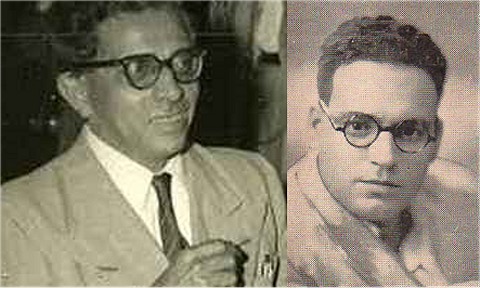
Five songs performed in the film are listed below. The translations
are my own, because literal translations can be beyond cumbersome. For
example, Moorakh Man Ab Rota Kyon Hai, translates literally as “Crass
Mind Cries Now.” I like my translation better.
Duniya Hai Shatranj Ki Baazi, which I translate
as “The World is a Game of Chess.”
Kya Suhaana Samaan Hai Khula Chandrama, which I
translate as “How Pleasant It Is Beneath the Haloed Moon.”
Moorakh Man Ab Rota Kyon Hai which I translate
is “My Foolish Mind is Crying Now.”
Nazumi Haathe Hamaara Dekh or, “We Will Join
Hands in the Future.”
Prem Pujari Aao Prem Pujari Aao is a tough one.
Pujari can mean priest, worship, or worshipper. Prem roughly means love,
but people use the word to mean I love you. I translate the title as, “I’ve
learned to love you, learned to love you.”
The rest of this article focuses on the cast and crew.
Alas, information on several of the actors and actresses listed in
the credits on various sites is nonexistent. In many cases, another actor,
actress, or politician exists, with the same or a similar name, and was
born after the film was made. For example, a famous Indian politician was
named Hukum Singh. He was born the same year that Tarzan Ki
Beti was released and is obviously not the Hukum Singh who
is listed in the film’s credits.
Shyama Zutshi was born in 1910. She appeared in
films beginning with Shiv Bhakti in 1934. She acted in several
films including, Majnu, Tarzan Ki Beti, Khonni Jdaugar and
Kaarwaane
Hayatt.
Shyama Zutshi belonged to a well to do family in
Lahore. Her father, Ladli Prasad Zutsh, was an attorney. She was
quite a successful and sought after actress, but abruptly left films and
focused on politics and the freedom struggle. Shyama was an elected congressional
leader and a front line freedom fighter along with her mother and sisters.
The family was influenced by Gandhi’s Non Violence movement.
Another possible reason for Shyama Zutshi to quit
films was the influence of a fellow Kashmiri Actor Chander Mohan Wattal.
Chander
Mohan told her repeatedly to quit. According to him acting in movies
was not meant for girls from good families.
I wonder how he felt about her being elected to congress
and marching on the protest lines.
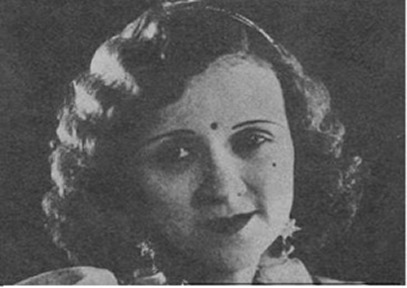
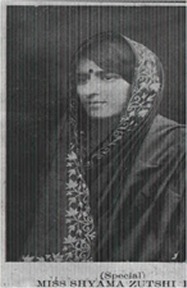
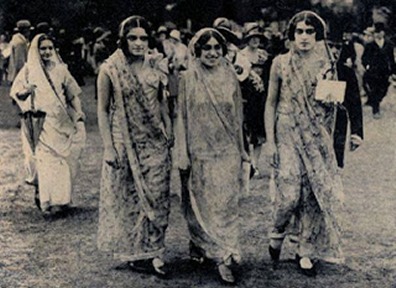
(Shyama and her sisters, Manmohini and Janak
with their mother Lado Rani. All four women were front line Freedom
Fighters from Punjab)
G.N. Butt was best known as a supporting
actor. He appeared in 68 films including Jatti (1958), Nooran
(1957) and Zamindar (1943). He died on October 16, 1966 in Lahore,
Punjab, Pakistan.
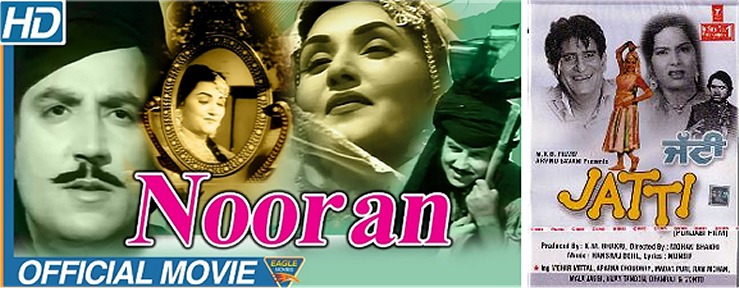
Zahoor Shah is best known for Dil Da Jani
(1967), Heer Sial (1965) and Sola Aanay (1959).
He made over 70 films. The photo of Zahoor is the best I could locate.
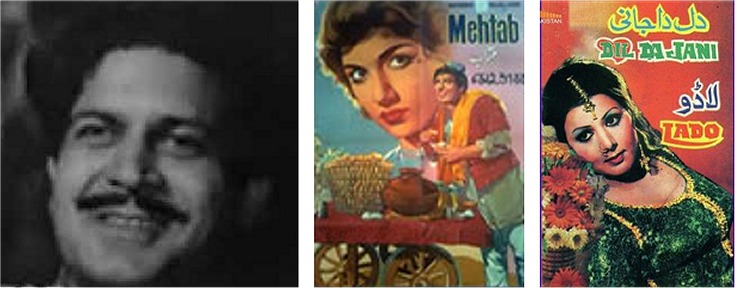 Zubeida Begum Dhanrajgir (1911–1988) was an
Indian film actress. She acted in the first Indian talkie movie Alam
Ara (1931). Her credits include early hits Devdas (1937),
and Sagar Movietone's first talkie, Meri Jaan.
Zubeida Begum Dhanrajgir (1911–1988) was an
Indian film actress. She acted in the first Indian talkie movie Alam
Ara (1931). Her credits include early hits Devdas (1937),
and Sagar Movietone's first talkie, Meri Jaan.
Born in Surat city of Gujarat in western India, Zubeida
was a Muslim princess, the daughter of Nawab Sidi Ibrahim Muhammad Yakut
Khan III of Sachin State and Fatima Begum. She had two sisters,
Sultana and Shehzadi, both actresses. She was among the few
girls who entered films at a tender age during a time when it was not considered
an appropriate profession for girls from respectable families, let alone
royalty.
Zubeida was only 12 when she made her debut in
Kohinoor.
Through the 1920s she made infrequent appearances on screen along with
her sister, Sultana who, by then, had become one of Indian cinema's
loveliest leading ladies. One of the films to star the two sisters was
Kalyan
Khajina in 1924. They also shared the screen in Zubeida's
first blockbuster, Veer Abhimanyu released two years earlier, a
film where their mother, Fatima Begum, played an important role.
In 1925 Zubeida had nine releases, amongst themKala
Chor, Devdasi and Desh Ka Dushman. A year later she
starred in her mother's film, Bulbul-e-Paristan. 1927 was
memorable for her with movies Laila Majnu, Nanand Bhojai
and Naval Gandhi's Sacrifice which were very successful movies
at this time. The latter, based on Rabindranath Tagore's 'Balidan',
also starred Sulochana Devi, Master Vithaland Jal Khambatta. It
condemned the age-old custom of animal sacrifice in certain Kali temples
in Bengal. The Members of the Indian Cinematograph Committee were
wowed by this "excellent and truly Indian film". Its European members recommended
that it be sent abroad for screening.
Zubeida starred in a string of silent films before
Alam
Ara proved to be the turning point in her career and was her biggest
hit. She suddenly was highly in demand and got wages high above the standards
for a woman in the film industry at that time.
Through the '30s and early '40s she made a hit team with
Jal
Merchant and starred in several successful films based on Hindu mythology.
She was also successful in portraying emotions with films
such as Ezra Mir's Zarina which had her playing a
vibrant, volatile circus girl whose kisses steamed up the screen and sparked
a heated debate on censorship. Zubeida was one of the few actresses
to make a successful transition from the silent era to the talkies.
In 1934 she founded Mahalakshmi Movietone with
Nanubhai
Vakil and had box-office bonanzas in Gul-e-Sonobar and
Rasik-e-Laila.
She continued to appear in one or two films a year till 1949. Nirdosh
Abla was her last film.
Zubeida spent her last years at the family's Bombay
palace, Dhanraj Mahal. She died in 1988.
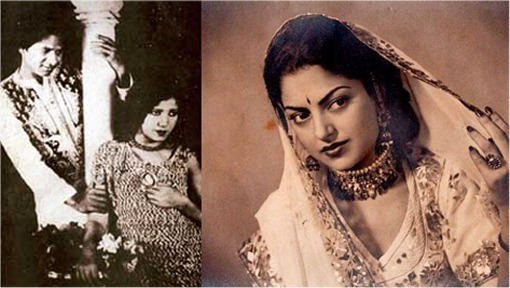
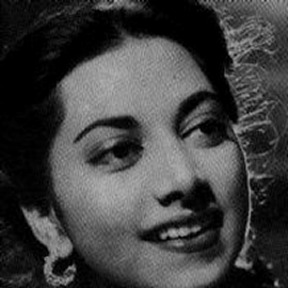
Majnu, whose real name was Harold Lewis, was
introduced as a leading man opposite Shyama Zutshi by producer/director
Roop
K. Shorey in Majnu (1935) — a musical comedy satirizing
the old story of Laila Majnu, and produced, directed and
shot in Lahore with Ghulam Haider as music director. The film was
filled with daring motorbike stunts and special effects. Audiences were
thrilled at the sight of Majnu trapped on the railway tracks by
the villain.
The film was a success and R. K. Shorey used Majnu
as the leading man in his next film, Tarzan ki Beti (1938).
Tarzan
Ki Beti was hailed as the best jungle picture ever produced in
India at the time. Filmed in the snowy Himalayas, the film topped its predecessor
in its action sequences and placed Punjab on the entertainment map of India
and the world.
In later years, Majnu acted as a comedian/supporting
actor in many films including Ek Thi Ladki (1949), Ek
Do Teen (1953), Jalwa (1955)
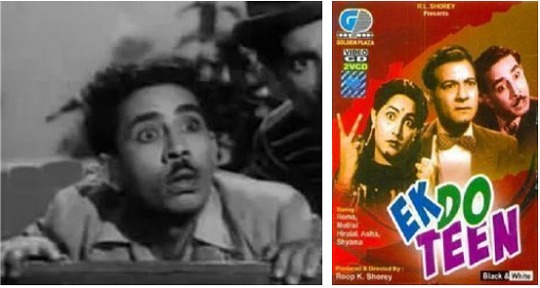
FILM SCREEN SHOTS
Move Screen Captures by Bill Hillman
NOTE:
Poster and Screen Captures are from the 2002 version
of this title.
We use them here until we can track down more images
from the 1938 version
